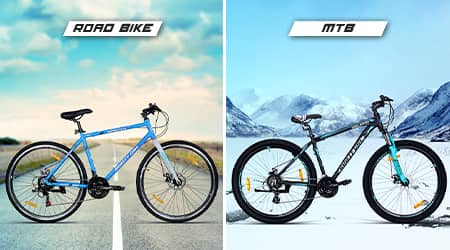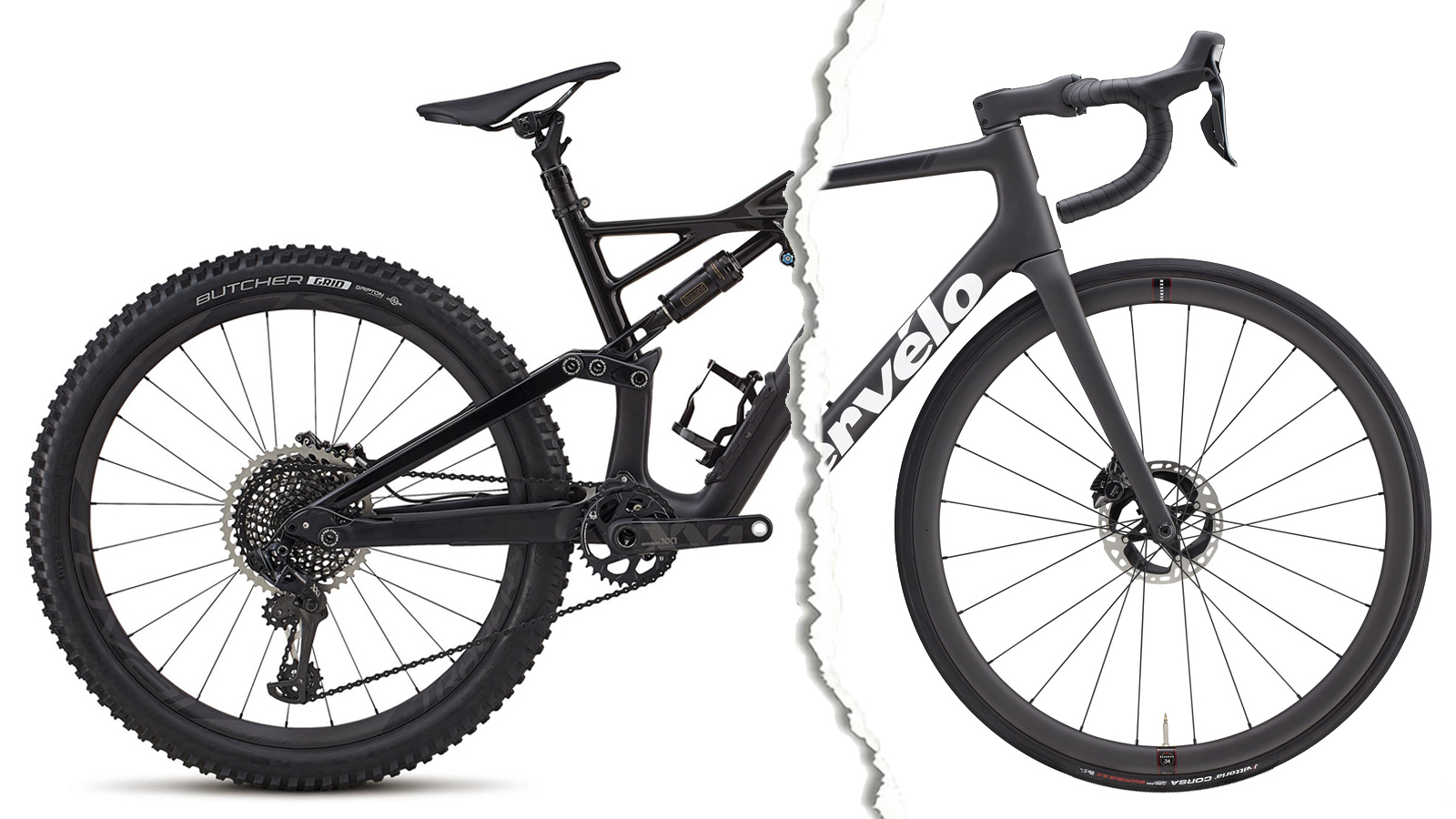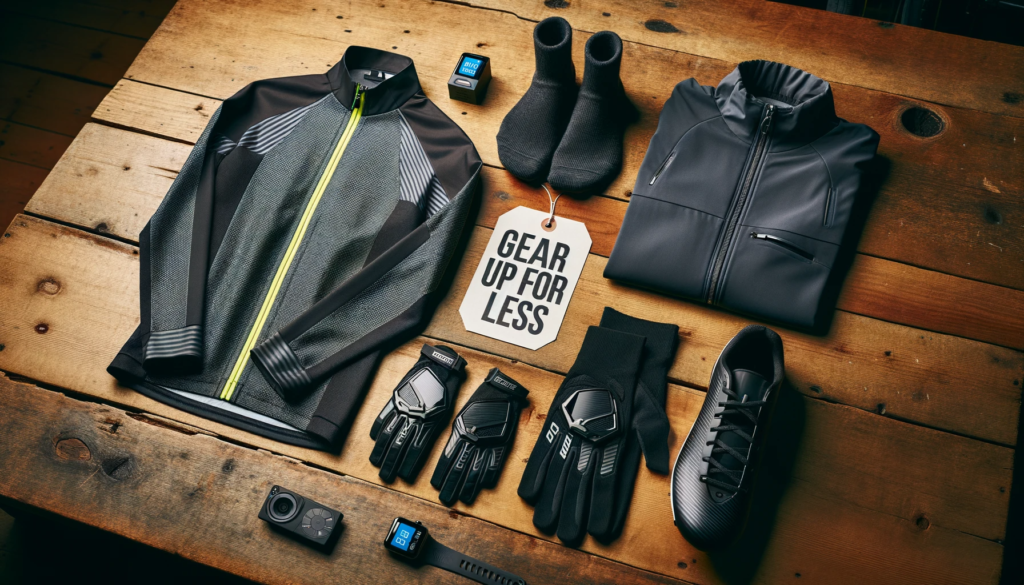If you’re new to cycling or just curious about the different types of bikes out there, you might be wondering what sets a mountain bike apart from a regular bike.
Let’s make sure we’re on the same page about what these two types of bikes are.
A mountain bike is designed for off-road cycling. It’s built to handle rough terrain like dirt trails, rocky paths, and steep hills. On the other hand, a road bike (which we’re calling a “regular bike” here) is made for smooth, paved surfaces like city streets, bike paths, and highways. Road bikes are all about speed and efficiency on flat or gently rolling roads.
Now, you might be thinking, “Can’t I just use one bike for everything?”
Well, technically, yes—but each bike is optimized for specific conditions. Using a mountain bike on the road or a road bike on a trail won’t give you the best experience. So, let’s break down what is the difference between mountain bike and regular bike in design, components, performance, and usage to help you see why each bike shines in its own environment.
Design Differences Between Mountain Bikes and Road Bikes
The most obvious differences between mountain bikes and road bikes come down to their design. These design choices are all about making each bike perform well in its intended setting.
Frame: Built for Different Challenges
- Mountain Bikes: These bikes have sturdy, durable frames made from materials like aluminum, steel, or carbon fiber. The frame is thicker and stronger to handle the impacts of jumps, drops, and rocky terrain. Mountain bike frames are also designed with a more relaxed geometry, meaning you sit more upright, which gives you better control on uneven surfaces.
- Road Bikes: Road bikes prioritize lightness and aerodynamics. Their frames are made to be as light as possible, often using high-end aluminum or carbon fiber, so you can go faster with less effort on smooth roads. The geometry is more aggressive, meaning you lean forward more, which helps with speed and efficiency.
Tires: Grip vs. Speed
- Mountain Bikes: Tires on mountain bikes are wide and knobby. They’re usually between 2.0 to 2.5 inches wide, with deep treads that provide excellent grip on loose dirt, mud, or gravel. These tires are great for traction but create more rolling resistance, which slows you down on pavement.
- Road Bikes: Road bike tires are narrow, typically around 23 to 28 millimeters wide, with minimal tread. This design reduces rolling resistance, allowing you to ride faster on paved surfaces. However, these tires wouldn’t fare well on rough terrain—they’d slip and slide all over the place.
Suspension: Comfort on Rough Terrain
- Mountain Bikes: Most mountain bikes have at least a front suspension fork to absorb shocks from rocks, roots, and bumps. Some mountain bikes, called full-suspension bikes, have both front and rear suspension for even better control on technical trails. Suspension is crucial for a smoother, more controlled ride off-road.
- Road Bikes: Road bikes usually don’t have suspension because paved roads are smooth. Adding suspension would just add unnecessary weight and reduce efficiency. Instead, road bikes rely on the frame and tires to provide a bit of cushioning.
Handlebars: Control vs. Aerodynamics
- Mountain Bikes: Mountain bikes typically have flat or slightly raised handlebars. This design gives you an upright riding position, which is better for control and visibility on tricky trails.
- Road Bikes: Road bikes have drop handlebars that curve downward. These allow you to ride in a more aerodynamic position, which helps you go faster. They also offer multiple hand positions for comfort on long rides.

Credit: www.outdoors91.com
Component Differences: Gearing, Brakes, and More
Beyond the basic design, the components on mountain bikes and road bikes are tailored to their specific uses. Let’s take a look at how gearing, brakes, and pedals differ.
Gearing: Climbing Hills vs. Speed on Flats
- Mountain Bikes: Mountain bikes have lower gear ratios, which means they have smaller chainrings (the gears at the front) and larger cogs (the gears at the back). This setup makes it easier to pedal up steep hills or over rough terrain. You won’t go as fast, but you’ll have the power to tackle tough climbs.
- Road Bikes: Road bikes have higher gear ratios, with larger chainrings and smaller cogs. This allows you to reach higher speeds on flat roads but makes it harder to climb steep hills.
Brakes: Stopping Power in Different Conditions
- Mountain Bikes: Many mountain bikes use disc brakes, which provide strong stopping power even in wet, muddy, or dusty conditions. Disc brakes are especially important when you’re flying down a trail and need to stop quickly.
- Road Bikes: Traditionally, road bikes use rim brakes, which are lighter and work well on dry pavement. However, more road bikes are now being equipped with disc brakes for better performance in all weather conditions.
Pedals: Versatility vs. Efficiency
- Mountain Bikes: Mountain bikes often come with flat pedals that you can use with regular shoes. This is great for casual riders or those who want to easily put a foot down on tricky terrain. Some mountain bikers use clipless pedals (which attach to special shoes) for better power transfer.
- Road Bikes: Road bikes almost always use clipless pedals to maximize pedaling efficiency. These require special cycling shoes, which can take some getting used to but help you ride faster and longer.

Performance Differences: Where Each Bike Shines
Now that we’ve covered design and components, let’s talk about how these bikes perform in different environments.
On Paved Roads
- Road Bikes: Road bikes are built for speed and efficiency on smooth surfaces. Their lightweight frames, narrow tires, and aerodynamic design make them much faster than mountain bikes on pavement. If you’re commuting, racing, or just enjoying a leisurely ride on the road, a road bike is the way to go.
- Mountain Bikes: Mountain bikes are slower on roads because of their heavier frames, wider tires, and suspension, which all create more resistance. You’ll feel like you’re working harder to go the same speed as a road bike.
On Trails and Rough Terrain
- Mountain Bikes: This is where mountain bikes excel. Their wide tires provide excellent traction, and the suspension smooths out bumps and jolts. You’ll feel stable and in control, even on rocky or root-filled paths.
- Road Bikes: Road bikes are not meant for off-road use. Their narrow tires would slip on loose surfaces, and the lack of suspension would make for a jarring, uncomfortable ride. Plus, the frame isn’t built to handle the impacts of rough terrain.
Usage Differences: Choosing the Right Bike for Your Needs
So, where should you ride each type of bike? Let’s break it down.
- Mountain Bikes: These are perfect for off-road adventures. Think dirt trails, forest paths, mountain terrain, or any place where the ground is uneven. If you love the idea of exploring nature and tackling challenging landscapes, a mountain bike is your best friend.
- Road Bikes: Road bikes are ideal for paved surfaces. Whether you’re commuting to work, going for a long-distance ride, or competing in a race, a road bike will get you there efficiently and comfortably.
Other Considerations: Cost and Maintenance
While we’re at it, let’s touch on a couple of other differences that might influence your decision.
Cost
- Mountain Bikes: Mountain bikes, especially full-suspension models, can be more expensive due to their complex components and sturdy build. However, there are plenty of affordable hardtail (front-suspension only) options for beginners.
- Road Bikes: Road bikes vary widely in price. You can find budget-friendly models for casual riders or high-end bikes for serious racers. Generally, road bikes can be less expensive than mountain bikes at the entry level.
Maintenance
- Mountain Bikes: These bikes require more frequent maintenance because they get exposed to dirt, mud, and rough conditions. You’ll need to clean and service them regularly to keep them in top shape.
- Road Bikes: Road bikes also need regular maintenance, but they tend to stay cleaner and require less frequent attention since they’re used on smoother surfaces.
Choosing The Right Bike
Choosing the right bike is essential for an optimal riding experience. Whether you’re a beginner or a seasoned cyclist, understanding the differences between mountain bikes and regular bikes can help you make an informed decision. Let’s delve into the key factors to consider when choosing the right bike for your needs.
Factors To Consider
When choosing between a mountain bike and a regular bike, several factors come into play. These factors can help determine which type of bike is best suited for your intended use.
Personal Preference
Your personal preference plays a significant role in selecting the right bike. Consider the type of terrain you intend to ride on, your cycling experience, and the specific features that are important to you. While some individuals may prefer the speed and agility of a regular bike for urban commuting, others may favor the robustness and off-road capabilities of a mountain bike for trail riding.
Frequently Asked Questions
Is A Mountain Bike Good For Street Riding?
Yes, mountain bikes are good for street riding due to their versatile features and robust build.
Is A Mountain Bike Better Than A Normal Bike?
Yes, a mountain bike is better than a normal bike for off-road trails and rugged terrain due to its specialized features.
Can You Use A Normal Bike For Mountain Biking?
Yes, you can use a normal bike for mountain biking, but it may not perform as well as a mountain bike designed for off-road terrain. A mountain bike has specific features like suspension, larger tires, and better gear ratio to handle rough trails and steep climbs.
What Is The Difference Between A Mountain Bike And A Cycling Bike?
A mountain bike is designed for off-road trails and rugged terrain, with wider tires and suspension. A cycling bike is built for smooth roads and speed, with thinner tires and a lightweight frame. Both offer different riding experiences.
Conclusion
To sum it up, the main differences between mountain bikes and road bikes come down to their design, components, performance, and intended use. Mountain bikes are rugged, with wide tires and suspension for off-road challenges, while road bikes are sleek, with narrow tires and no suspension for speed on pavement.
Choosing the right bike depends on where and how you plan to ride. If you’re hitting the trails, go for a mountain bike. If you’re sticking to roads, a road bike is your best bet. And remember, there’s no rule saying you can’t have both if you want to explore different types of cycling!




